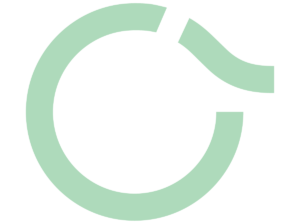
Osteopathy is a holistic healthcare approach that focuses on diagnosing, treating, and preventing health problems by emphasizing the musculoskeletal system. When it comes to headaches, osteopathy offers non-invasive and drug-free treatment options that can be highly effective. Here’s how osteopathy can help alleviate and manage headaches:
1. Comprehensive Assessment
Osteopaths begin by conducting a thorough assessment to identify the type and cause of headaches. This includes taking a detailed medical history and performing a physical examination to understand potential triggers and contributing factors. Common types of headaches treated by osteopaths include:
Tension headaches
Migraines
Cervicogenic headaches (originating from the neck)
Cluster headaches
Understanding the specific type of headache is crucial for developing an effective treatment plan.
2. Manual Therapy Techniques
Osteopaths use a variety of manual therapy techniques to relieve headache symptoms and address their root causes. These techniques include:
Soft Tissue Manipulation: This involves massaging the muscles and soft tissues around the head, neck, and shoulders to relieve tension, improve blood flow, and reduce muscle tightness that can contribute to headaches.
Cranial Osteopathy: A gentle technique that focuses on the bones of the skull and their connections. It aims to release tension and improve the movement of fluids around the brain and spinal cord, which can help alleviate headaches.
Joint Mobilization: Gentle movements to improve the range of motion in the neck and upper back joints, which can reduce stiffness and relieve headaches caused by musculoskeletal issues.
Muscle Energy Techniques (METs): These involve the patient using their muscles from a specific position against a counterforce applied by the osteopath. This can help stretch tight muscles and improve joint function, reducing headache frequency and intensity.
3. Postural and Ergonomic Advice
Poor posture and ergonomics can significantly contribute to headaches, particularly tension headaches and cervicogenic headaches. Osteopaths provide:
Postural Correction: Guidance on maintaining good posture during daily activities, such as sitting, standing, and sleeping, to reduce strain on the neck and shoulders.
Workstation Ergonomics: Recommendations for setting up a workstation that promotes good posture, including the proper height and position of your chair, desk, and computer screen.
4. Lifestyle and Stress Management
Lifestyle factors, including stress, can play a significant role in the occurrence and severity of headaches. Osteopaths offer advice on:
Stress Management Techniques: Strategies to manage stress, such as mindfulness, meditation, breathing exercises, and yoga, which can help reduce the frequency and intensity of stress-related headaches.
Hydration and Nutrition: Guidance on maintaining proper hydration and a balanced diet, as dehydration and certain foods can trigger headaches in some individuals.
Regular Physical Activity: Encouragement to engage in regular physical activities that promote overall health and reduce stress, which can help prevent headaches.
5. Holistic Approach
Osteopathy treats the body as a whole, recognizing that headaches may be linked to issues in other parts of the body. Osteopaths may:
Address Related Areas: Treat other areas of the body that may be contributing to headaches, such as the upper back, shoulders, or jaw.
Integrate Other Treatments: Collaborate with other healthcare providers, such as physiotherapists, nutritionists, or mental health professionals, to provide comprehensive care.
6. Preventive Strategies
Preventive care is an essential aspect of osteopathic treatment for headaches. Osteopaths work with patients to develop long-term strategies to maintain health and prevent the recurrence of headaches, including:
Regular Osteopathic Check-Ups: Periodic visits to an osteopath to monitor and maintain musculoskeletal health, which can help prevent headaches.
Tailored Exercise Programs: Ongoing guidance on exercises and activities tailored to the individual’s needs and lifestyle to support overall health and prevent headache triggers.
Conclusion
Osteopathy offers a multifaceted approach to managing headaches through manual therapy, postural and ergonomic advice, lifestyle modifications, stress management, and preventive care. By addressing the underlying causes and providing personalized treatment plans, osteopaths help patients achieve long-term relief from headaches and improve their overall quality of life. This holistic and patient-centered approach makes osteopathy a valuable option for those suffering from headaches.


